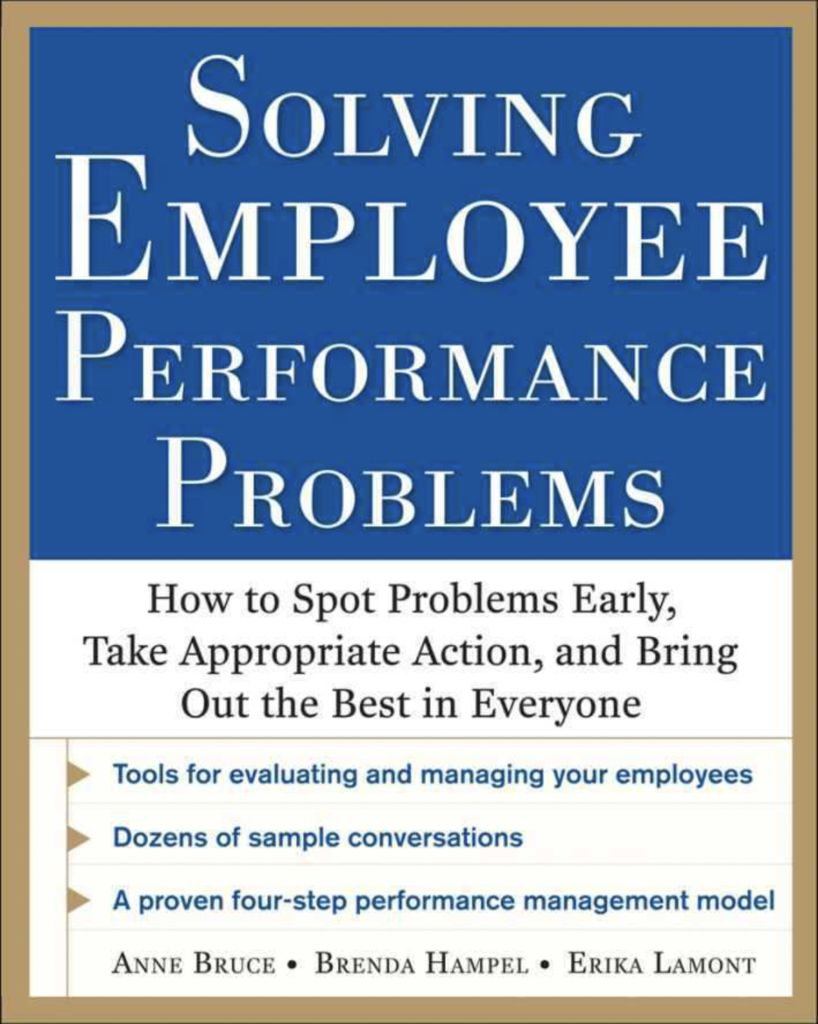As a leader, you’re going to run into employee performance problems. They’re inevitable and unavoidable. But they are addressable and often solvable. It’s important to address them quickly and effectively, so that the consequences of the performance problems are minimized for employees, your team, your department, and/or your organization.
It’s also important to recognize that performance problems result from a variety of causes—insufficient training, poor feedback, lack of necessary skills, low expectations, etc. So don’t rush in and presume to have all of the answers. That often leads to ineffective solutions that make the performance problems persist.
Instead, use this 12-step diagnostic tool kit. It provides basic statements and questions that often bring to the surface the real performance issue at hand and, therefore, a possible solution. You might find it a fast and easy technique that you’ll refer to again and again for spotting potential problems early on. It will help you bring out the best in your workforce.
1. Start by asking the employee, “What is the problem?”
a. What is the difference between what is being done and what is expected?
b. Describe your proof.
c. How reliable is your proof?
2. Identify performance discrepancies
a. Are they important? How so?
b. What happens if you do nothing?
c. Is it even worth taking time to make the problem better?
3. Surface any performance problems resulting from lack of skill
a. Could the performers do the job if their lives depended on their doing it correctly?
b. Evaluate skills. Are they adequate, or are they below adequate?
4. Evaluate past performance
a. Has it been better? When? What were the commonalities?
b. Have current employees forgotten what they were trained to do?
c. Do people know what is expected of them?
5. Master skills by using them frequently
a. Do employees get regular feedback on how they are doing?
b. How is the feedback communicated to them?
c. Do employees like the way in which they are provided feedback?
6. Ask: Is there a better way to do things? Is there another process that will get the job done?
a. Would a clarified job description be useful?
b. Can employees relearn the task by watching others?
c. Can the process be changed or improved in some way?
7. Ensure that employees have what it takes to be successful at doing the job
a. Is the physical and/or mental potential of the people involved strong enough?
b. Are people truly qualified?
8. Be transparent about performance and punishment—Is performance being punished?
a. What is in it for the employee to do the job right?
b. Is doing the job somehow self-punishing?
c. Is there a reason not to perform well?
9. Find out when not doing the job gets rewarded
a. Have there been rewards in the past for doing the job wrong?
b. Does doing it wrong draw attention to the worker?
c. Do employees worry less, have less anxiety and tension, or get less tired if they do less work?
10. Emphasize that doing it right matters
a. Is there a favorable outcome for doing it right?
b. Are there consequences for not doing it right?
c. Is there pride in doing the job?
d. Is there any status or lack of it connected with the job?
11. Remove obstacles to high performance
a. Do employees know what is expected?
b. Do employees know when it is expected?
c. Is competition making the job too difficult?
d. Are time and tools available?
e. Is the job physically a mess and disorganized?
12. Think of any limitations on possible solutions
a. Are there solutions that would be considered unacceptable to the organization?
b. Do leaders have preferred solutions? Are they open to suggestions for improvement by workers?
c. Can the organization afford the time and resources to find real solutions to real problems?
Asking the right questions at the right times will help you get to the heart of your performance issues and create an environment that is transparent and open for feedback. This prevents small issues from becoming big ones and blockers for success.







